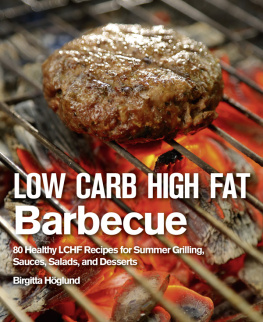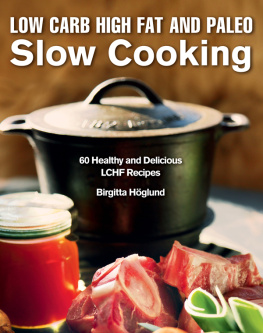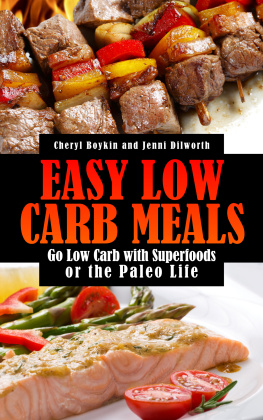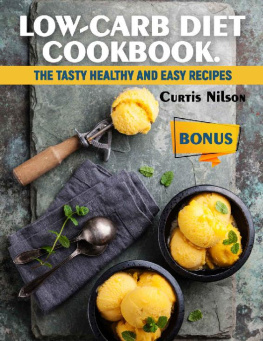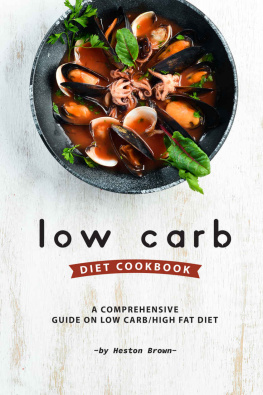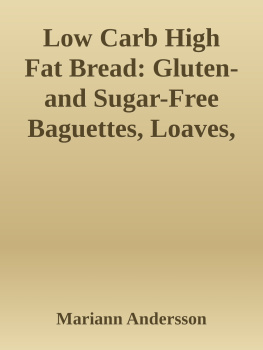Copyright 2015 by Birgitta Hglund
English translation copyright 2015 by Skyhorse Publishing
Originally published as Grillmat LCHF 2013 by Pagina Frlags AB/Optimal Frlag
All rights reserved. No part of this book may be reproduced in any manner without the express written consent of the publisher, except in the case of brief excerpts in critical reviews or articles. All inquiries should be addressed to Skyhorse Publishing, 307 West 36th Street, 11th Floor, New York, NY 10018.
Skyhorse Publishing books may be purchased in bulk at special discounts for sales promotion, corporate gifts, fund-raising, or educational purposes. Special editions can also be created to specifications. For details, contact the Special Sales Department, Skyhorse Publishing, 307 West 36th Street, 11th Floor, New York, NY 10018 or .
Skyhorse and Skyhorse Publishing are registered trademarks of Skyhorse Publishing, Inc., a Delaware corporation.
Visit our website at www.skyhorsepublishing.com.
10 9 8 7 6 5 4 3 2 1
Library of Congress Cataloging-in-Publication Data is available on file.
Cover photo credit: Mikael Eriksson
Interior design and photos: Mikael Eriksson, M Industries
Print ISBN: 978-1-63220-532-2
Ebook ISBN: 978-1-63220-933-7
Printed in China
CONTENTS
Foreword by Anna Halln
Im delighted to have been asked to write a few words for this bookhappy and proud for many reasons. First, because youre now holding in your hands an excellent cookbook by an author who has thorough knowledge of low-carb high fat grilling; better yet, she has firsthand experience of how wonderful this way of eating is, and the vitality and strength it can bring about. I have been fortunate enough to follow Birgitta Hglunds impressive progress for a few years now. Ive enjoyed seeing her grow in courage, and go from a state of pain and low energy to the Birgitta of today, who is a fantastic role model for anyone fighting heavy odds. She proves that it is indeed possible to find ones way back from ill-health and truly enjoy life to its fullest.
These are strong words, to be sure, but they arent emptyI mean each and every one of them.
Furthermore, Im excited to help spread this knowledge far and wide, and to as many people as possible. The low-carb eating plan, with its natural fats, is a lifestyle choice that is very dear to me. In fact, I myself eat according to LCHF dietary guidelines.
Knowledge about carbohydrates, fat, and protein, and how they work in the human body, has allowed me to finally get off the well-worn yo-yo dieters track (which was keeping me overweight), to become the healthy, happy, and weight-stable girl I am today. Perhaps not girlIm not really sure what to call myself. In any case, this is forty-seven-year old Anna speaking.
The three nutritional building blocks (carbohydrates, fat, and protein) are what piqued my interest at the beginning. Later, it became more important for me to understand the actual balance and relationship between these macronutrients in our diet. How much of each are we supposed to eat? What are healthy foods to choose, and what does a nutritionally sound plate look like? It seems that, thanks to our current knowledge and experience, we now have a solid dietary foundation that can be adjusted to most of our individual needs, goals, and preferences.
Today even the smaller details attract my curiositythe micronutrients such as vitamins, minerals, and antioxidants. Unfortunately, we sometimes overlook them while were stuck in our hunt for carbohydrates. But these small details are critical if you want to feel your best, and they happen to be an integral part of Birgittas recipes. She not only creates the tastiest dishes around, she even manages to include all those good-for-you nutrients in a varied, simple, and natural wayas it should be.
Are you ready? If so, follow me on a short tour to discover the world of our foods tinier components.
Vitamins
Do you know what a vitamin is? The simplest way to define a vitamin is to say that its a critical, life-sustaining organic compound that we must obtain through eating food, because we are unable make it ourselves. It is a nutrient that is not a carbohydrate, a fat, or a protein. A vitamin isnt a mineral, either. Vitamins are in fact a group of many different compounds that are collected under a single umbrella term. They can beand often arevery different from one another.
For example, vitamin D is a hormone, whereas vitamin C and E are also antioxidants. Vitamins can be divided into two groups: water-soluble and fat-soluble. In addition, if you take too many of some vitamins, you run the risk of overdosing, while you can ingest other vitamins in virtually any amount since their toxicity levels are very low.
Minerals
In the next category of micronutrients are the minerals, which are to my mind almost more important than vitamins. It seems that lack of minerals is a more common problem than vitamin deficiency, yet its still not highlighted to the same extent. Minerals are elements found in the periodic tablethe one featured in chemistry class. Trace elements are the same as minerals, and are so-called because we need them in such small amounts. But Im not going to nitpick hereI will just call them all minerals.
Iron, magnesium, and calcium are examples of minerals. They each play different roles in the body; keep in mind that they have multiple purposes, too, not merely one. Whats more, they often work in symbiosis with one another, i.e. calcium helps you tighten your muscles, while magnesium helps them relax. The balance between the two minerals is very important.
Antioxidants
As their name indicates, antioxidants work against oxidation, which is damage inflicted by certain types of oxygen and nitrogen molecules. Other expressions for oxidation are rusting, aging, and going rancid. By consuming antioxidants, we slow down the rate at which oxidation takes place, and in some cases we can prevent it from happening altogether. A healthy body can live to between eighty and one hundred years if it ages normally. The body is amazing: it can produce antioxidants by itself, but with todays stresswhether due to environmental factors or chronic worryits not a bad idea to give the body a helping hand. When its so easy and tastes so good, why not?
Certain vitamins and minerals are capable of fighting oxidation. Selenium is a very important mineral that is also a powerful antioxidant. Selenium belongs to the bodys arsenal of natural defenses against cancer.
There are a lot of other elements besides vitamins and minerals that behave like antioxidants. Youve surely heard of the benefits of green tea, as well as the healthful properties of colorful leafy vegetables, berries, and cacao. But, you can also find a lot of antioxidants in mushrooms, spices, and herbs.
So is it really that difficult to eat right? It does feel like a big science project to gather all the different elements onto one plate. How did things get so difficult? How did people manage to survive at all before all this information came to light?
Well, earlier on we simply ate what was good for us, we listened to our bodies, and we learned from experience. We ate to feel our best according to our needs and capabilities.
Then nutritional advice came along that turned our concepts about food on their head. We removed much of what was nutritious out of our foodsuch as fat, for example, which ended up causing a vitamin D deficiency in many people. We increased our food options, but with foods that decreased our ability to absorb certain minerals. Foods that hamper our ability to absorb minerals tend to contain flour, which in turn contains gluten and other lectins. If we choose to eat whole grains, we also end up ingesting phytates, which hinder the bodys ability to absorb enough vitally important minerals.

